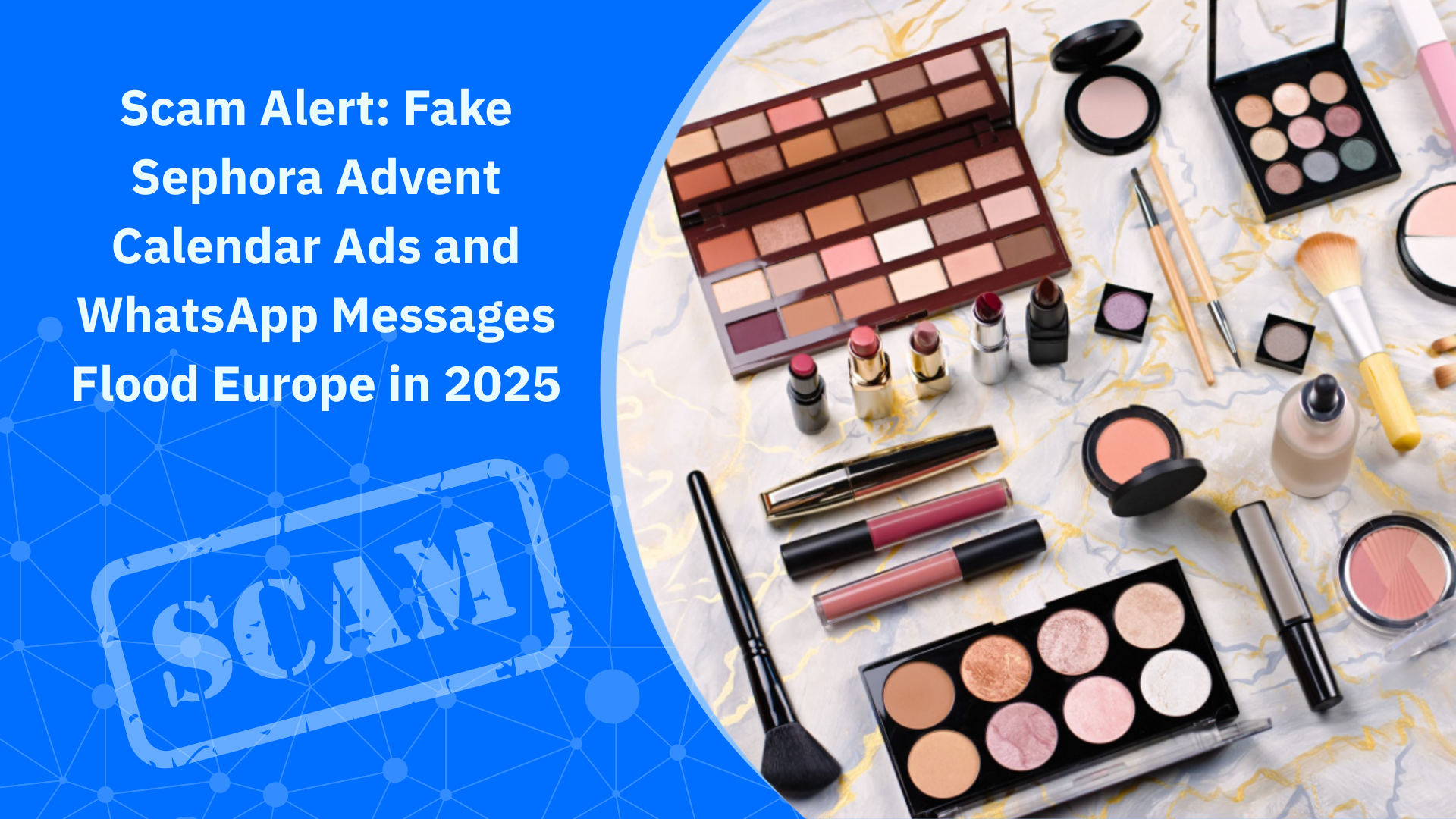Could You Tell a Real Business Investment Ad from a Fake One?

Americans lost more than $5.7 billion to investment scams in 2024 alone. Reports from both the Federal Trade Commission (FTC) and the FBI’s Internet Crime Complaint Center (IC3) show that it was the most profitable type of cybercrime that year.
Many of these weren’t the typical “get-rich-quick” schemes aimed at individuals. Increasingly, scammers are targeting entrepreneurs and small business owners who are used to seeing ads for business funding, growth programs, or investment opportunities across Facebook, Instagram, LinkedIn, and Google.
For a very small business, a fake ad can be hard to spot because it often looks professional: it might use the logo of a trusted bank, feature an image of a well-known investor, or even claim to be a government-backed “small business funding” initiative. Once clicked, these ads lead to cloned websites or fake “advisor” calls, and before long, business owners find themselves out thousands of dollars.
These scams could drain personal savings and hit where it hurts most: your company’s working capital, cash reserves, and reputation.
Why Small Business Owners Are Being Targeted
Fraudsters know that small business owners think differently from consumers. They’re used to taking calculated risks, responding quickly to opportunities, and managing money between personal and business accounts. That mindset, the same one that helps a company grow, can also make entrepreneurs more vulnerable to persuasive offers that look like a chance to expand or invest.
There are a few key reasons why scammers have turned their attention to very small businesses:
- They have real money to move. Even micro-businesses often hold larger sums in their accounts than private individuals — funds meant for supplier payments, marketing, or payroll. A well-crafted investment ad promising “high-return short-term deposits for small enterprises” can easily catch attention.
- They’re short on time. Running a business leaves little time for due diligence. Many owners rely on ads, reviews, or social proof to make fast decisions — exactly the signals scammers know how to fake.
- They’re familiar with business funding language. Fake investment ads often use phrases like “growth capital,” “seed fund,” or “small business yield program” to sound legitimate. Scammers even reference real institutions — the SBA, the U.S. Department of Commerce, or known banks — to give their offers credibility.
- They blend personal and professional life online. Entrepreneurs promote their ventures through Facebook, LinkedIn, and Instagram, the same spaces where scammers buy ad placements. This overlap makes targeting effortless: criminals can tailor messages to business demographics, industries, or interests.
- They assume ads on big platforms are vetted. Many entrepreneurs trust that ads on major platforms are checked and safe, but scammers constantly slip through automated screening using stolen branding and new accounts.
How Fake Business Investment Ads Work
Fraudsters have turned fake investment ads into a business model of their own — and they’re getting better at it every month. The schemes look professional, use the right industry language, and often appear right where entrepreneurs spend their time: on Facebook, Instagram, LinkedIn, YouTube, or Google search results, and even Messenger or Threads.
Here’s how the scam typically unfolds:
1.It starts with a convincing ad.
You might see an ad promising “guaranteed business funding,” “AI-backed investment strategies for entrepreneurs,” or “federal small business investment grants.” Some even feature stolen footage or AI-generated videos of well-known investors like Mark Cuban or Elon Musk endorsing a “new business opportunity.”
2.You click and land on a cloned website.
The website looks almost identical to a real bank, investment firm, or government program. It might even use a .com address that closely resembles the genuine one, like us-sba-program.com instead of sba.gov. The page will ask for your name, phone number, and business details — promising that an advisor will contact you shortly.
3.Then comes the phone call.
Within hours, a friendly “investment specialist” or “business funding consultant” reaches out. They sound professional and might even quote real investment terms. They’ll suggest transferring a small test amount to activate your business account.
4.You see fake profits.
Once you log in to the dashboard they send, it may look like your investment is growing. You’ll see charts, balance updates, or even fabricated transaction histories. But all of it is fake and generated to convince you to invest more.
5.The moment you try to withdraw, they vanish.
Requests to withdraw funds are ignored, delayed, or met with excuses. Then, suddenly, the website disappears, and your “advisor” stops responding. The money and sometimes your personal or business data are gone.
AI and Deepfakes Are Making Scams Harder to Spot
What makes this new wave of scams even harder to identify is the use of AI-generated content. Criminals are creating deepfake videos, synthetic voices, and fake testimonials that look like real financial experts or entrepreneurs.
Some scammers have launched fake Instagram ads impersonating U.S. banks, using AI-generated “advisors” to lure business owners into fake investment groups on WhatsApp. Others mimic the look of trusted news websites or local business magazines to appear more credible.
Related: They Wear Our Faces: How Scammers Are Using AI to Swindle American Families
How to Tell a Real Business Investment Ad from a Fake One
Fraudulent investment ads have become so polished that even experienced entrepreneurs can fall for them. But real opportunities and fake ones don’t behave the same way — they feel different once you know what to look for.
Here’s how to tell them apart:
|
Real business
investment ads |
Fake business
investment ads |
|
Come
from verified accounts of banks, brokers, or platforms registered with the
SEC or FINRA (like Fidelity, Charles Schwab, or Vanguard). |
Come
from new or unverified pages, often using names or logos that look familiar
but aren’t quite right. |
|
Contain
clear disclosures and risk warnings (e.g., “investments involve risk,
including loss of principal”). |
Promise
“guaranteed profits,” “no risk,” or “fast returns.” |
|
Direct
you to an official company domain — check the URL carefully (e.g., www.chase.com). |
Use
look-alike URLs with small differences (e.g., chase-businessfunding.com). |
|
Focus
on specific investment products with transparent terms. |
Use
vague language like “exclusive funding opportunity” or “limited-time access.” |
|
Never
pressure you to act immediately. |
Use
urgency tactics, such as “spots filling fast” or “offer ends today.” |
|
Don’t
contact you by phone unless you’ve requested it. |
Cold-call
or message you within hours of signing up through an ad. |
|
Provide
official contact information and customer support. |
Use
personal email addresses, messaging apps, or generic chatbots. |
|
Use
authentic photos, videos, and professional branding. |
May
use AI-generated images, deepfake videos, or synthetic voices to appear
legitimate. |
Extra signs something’s off:
- The ad uses celebrity images or mentions of famous investors without linking to their verified pages.
- The “business funding” offer appears to come from a government program, but the email or website isn’t hosted on a .gov domain.
- The person contacting you offers to “walk you through” creating an account or sharing screen access.
- The video or voice in the ad seems slightly unnatural: poor lip sync, robotic tone, or repeated phrases — a sign it may be AI-generated.
Related: Malicious Facebook Ads Push Fake ‘Meta Verified’ Browser Extensions to Steal Accounts
How Bitdefender Protects Your Business from Fake Investment Ads
No matter how cautious you are, scams keep evolving and so do the ways they reach you. That’s why small businesses need more than good instincts; they need protection that works in real time.
Bitdefender Ultimate Small Business Security helps you stay one step ahead:
- Blocks fake websites and malicious ads before you even click.
- If you receive an investment offer or “funding opportunity” through email or text, it can spot the signs of fraud and warn you right away.
- With Digital Identity Protection, you’ll get alerts if your business information or credentials
- From your work laptop to your phone, all devices connected to your business are shielded from phishing links, malware, ransomeware and data theft attempts.
Start your free trial now.
FAQs
What’s the biggest red flag in an investment ad?
Any promise of “guaranteed returns” or “no risk.” Real investments always include a risk disclaimer. If someone claims your business will “double its money” in days or weeks, it’s a scam. Scammers know that phrases like “secure profit”or “AI-backed growth tool” sound credible to entrepreneurs — but the truth is, no legitimate investment can guarantee a result.
How can I check if an investment company is legitimate?
Look up the company name on the SEC’s Investment Adviser Public Disclosure website or FINRA’s BrokerCheck. Legitimate firms and advisors are always registered.
Also, check the web address — real financial institutions use domains like .com or .gov, not business-growth-investment.net or us-funding-portal.com.
If the website lists no verifiable contact information or the social media pages were created recently, it’s safer to walk away.
What can I do if I clicked on a fake investment ad and shared information?
Act quickly. Stop all contact with the scammers — don’t reply to their emails, calls, or messages. If you transferred money or entered card details, call your bank right away so they can freeze or recover the funds. Change your passwords on your email, banking, and business accounts, and run a full scan of your devices using trusted security software to remove any malware. Finally, report the incident to the FTC at reportfraud.ftc.gov so they can track the fraudulent ad. Even one click can expose valuable data about your business, but responding fast can limit the damage.
tags
Author
Cristina is a freelance writer and a mother of two living in Denmark. Her 15 years experience in communication includes developing content for tv, online, mobile apps, and a chatbot.
View all postsRight now Top posts
How Kids Get Automatically Added Into WhatsApp Groups with Horrific Imagery Without Consent
November 24, 2025
Scammers Exploit Hype Around Starbucks Bearista Cup to Steal Data and Money, Bitdefender Antispam Lab Warns
November 18, 2025
Scam Alert: Fake Sephora Advent Calendar Ads and WhatsApp Messages Flood Europe in 2025
November 17, 2025
ClickFix Malware Chain Expands: Fake TradingView and Sora 2 Ads On Meta Now Target macOS Users
November 17, 2025
FOLLOW US ON SOCIAL MEDIA
You might also like
Bookmarks







